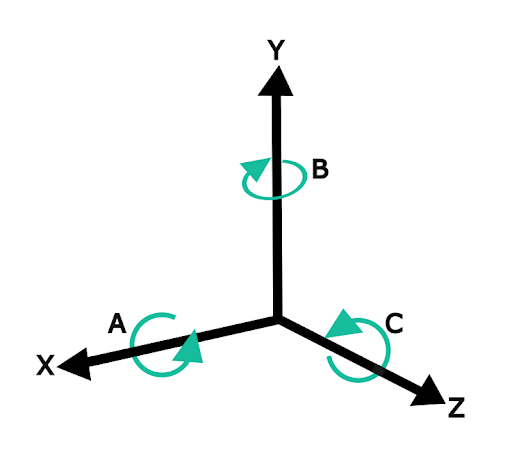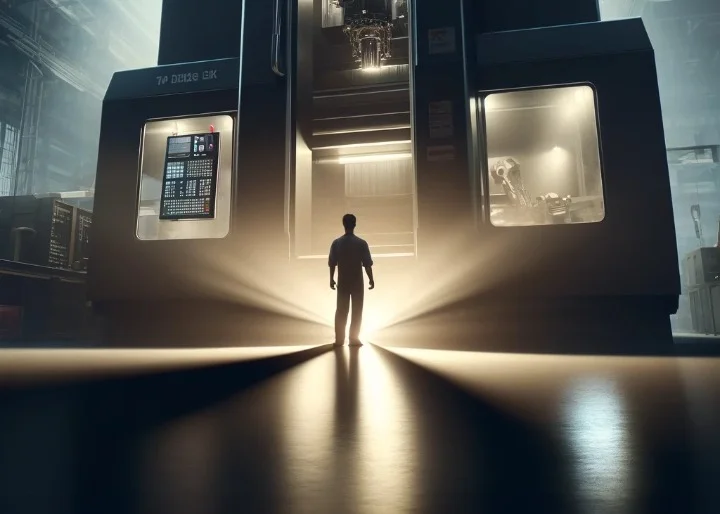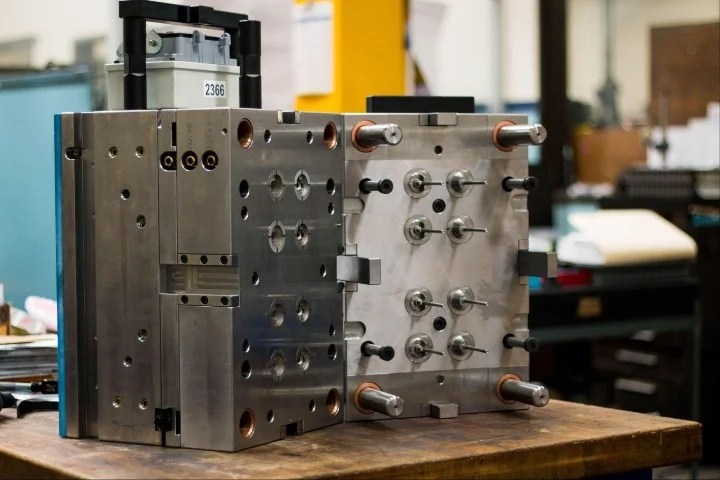Time to read: 5 min
Computer Numerical Control (or CNC) machining combines the efficiency of computer programming with the customizability of subtractive manufacturing. The CNC controller works in conjunction with mechanical components such as axes, motors, and drive components to automate the manufacturing process and maintain quality and repeatability.
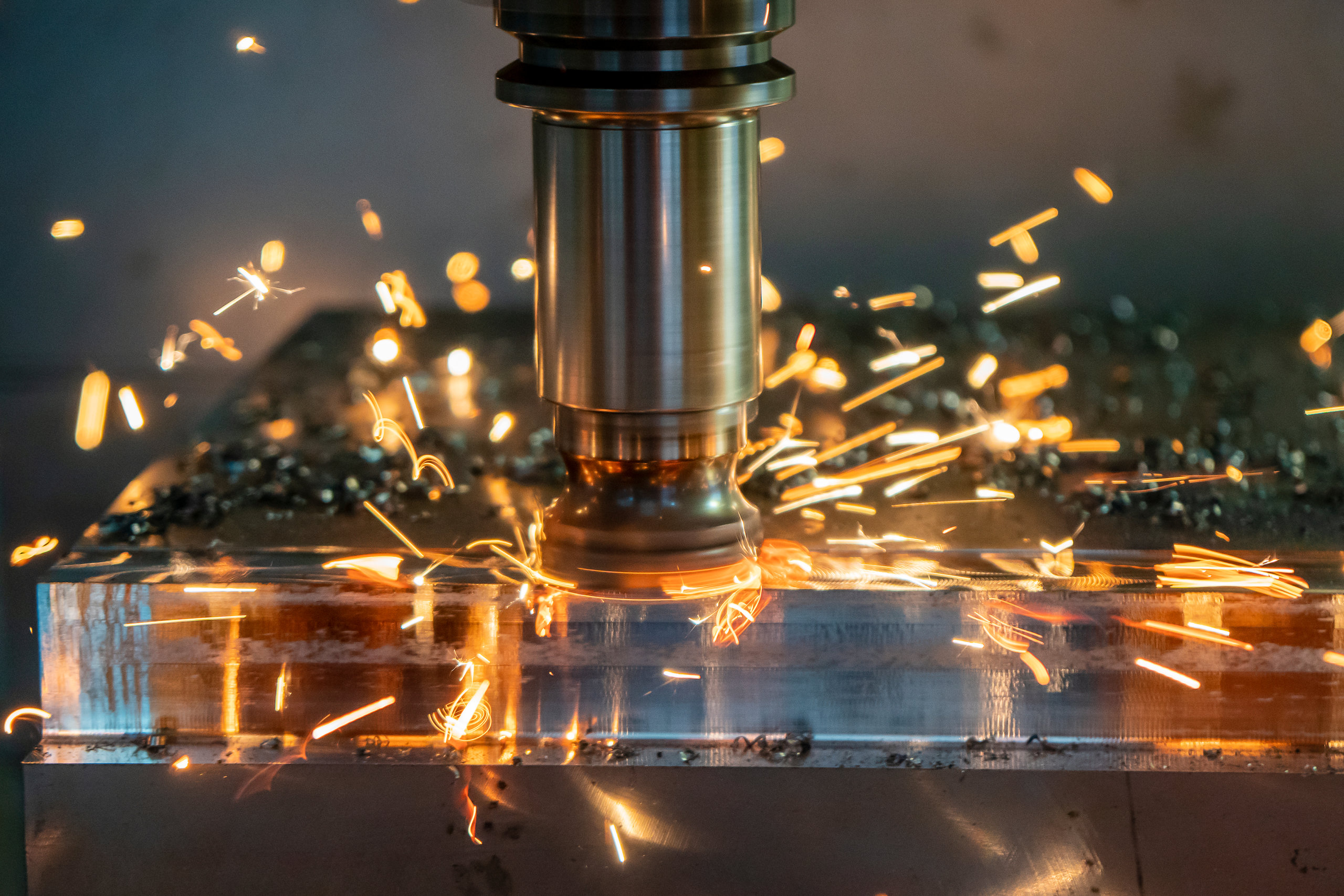
There are many different types of CNC machines on the market in 2022. Modern-day multi-axis CNC Milling Machines come with a wide range of features, which add value and functionality. However, these are only useful when the machine can move seamlessly along its axes. Furthermore, these axes are primarily responsible for maintaining accuracy in shaping the feed. So essentially, they are the lifeblood of any milling machine.
In this article, we’ll compare the functions and capabilities of various multi-axis CNC milling machines.
3-Axis CNC Machining
3-axis CNC machining evolved from rotary filing (think dental drill 😬). With a 3-axis CNC machine, the workpiece is stationary while the cutting tool moves across the X-, Y-, and Z-axes. The X-axis (vertical axis) is left to right along the lathe table, the Y-axis (horizontal axis) is from front to back of the table, and the spindle that drops from the top marks the Z-axis (depth). A standard 3-axis CNC milling machine has a table that moves the part to provide one or two planes of movement and a tool that provides the other one or two planes of movement.
3-axis machines are ideal for simple tasks that don’t require intricate detailing or depth. As such, it is one of the most preferred techniques for creating mechanical parts for automation. Additionally, you can also use it for cutting sharp edges, boring, milling slots, tapping, and drilling holes.
Limitations:
That said, 3-axis machining possesses the following limitations:
- Lower feature accuracy
- Lessened ability to perform intricate machining
- Reduction in available complexity of machined surfaces due to limited access of tooling to the part (reduced freedom of movement)
Checkout Fictiv’s CNC Machining capabilities
4-Axis CNC Machining
A 4-axis CNC machine functions much like its 3-axis counterpart. The workpiece is in a stationary position, and the cutting tool works on it to remove material and mold the desired part.
However, as the name indicates, 4-axis machining adds an axis of rotation to the standard X, Y, and Z planar movement. This extra movement is rotation along the X-axis, which forms a fourth plane – the A-axis. The rotation may be accomplished by moving the tool or the workpiece that is being machined, and the axis of rotation may be parallel to or perpendicular to the tool surface. The orientation of the axis of rotation determines how easy it is to machine certain features (i.e. undercuts) on a given machine.
4-axis milling is useful for cutting holes, cutting along an arc, or carving cutouts, especially on the sides or around a cylinder. It’s also useful for high-quality, precision engravings, milling, and drilling.
Limitations:
The greatest limitation of the 4-axis milling machine is its Geneva Mechanism. While the Geneva Mechanism is quite common for its simplicity, reliability, and precision, it allows the 4th axis only in principle. However, these machines do not support continuous machining in practicality as they possess a fixed set of stops. Hence, operators can only use the machine as a pure indexer.
Other drawbacks include:
- Quick wear and tear of the worm gear mechanism, especially during high-intensity use.
- The issue of backlash can affect your accuracy or the durability of the machine.
5-Axis CNC Machining
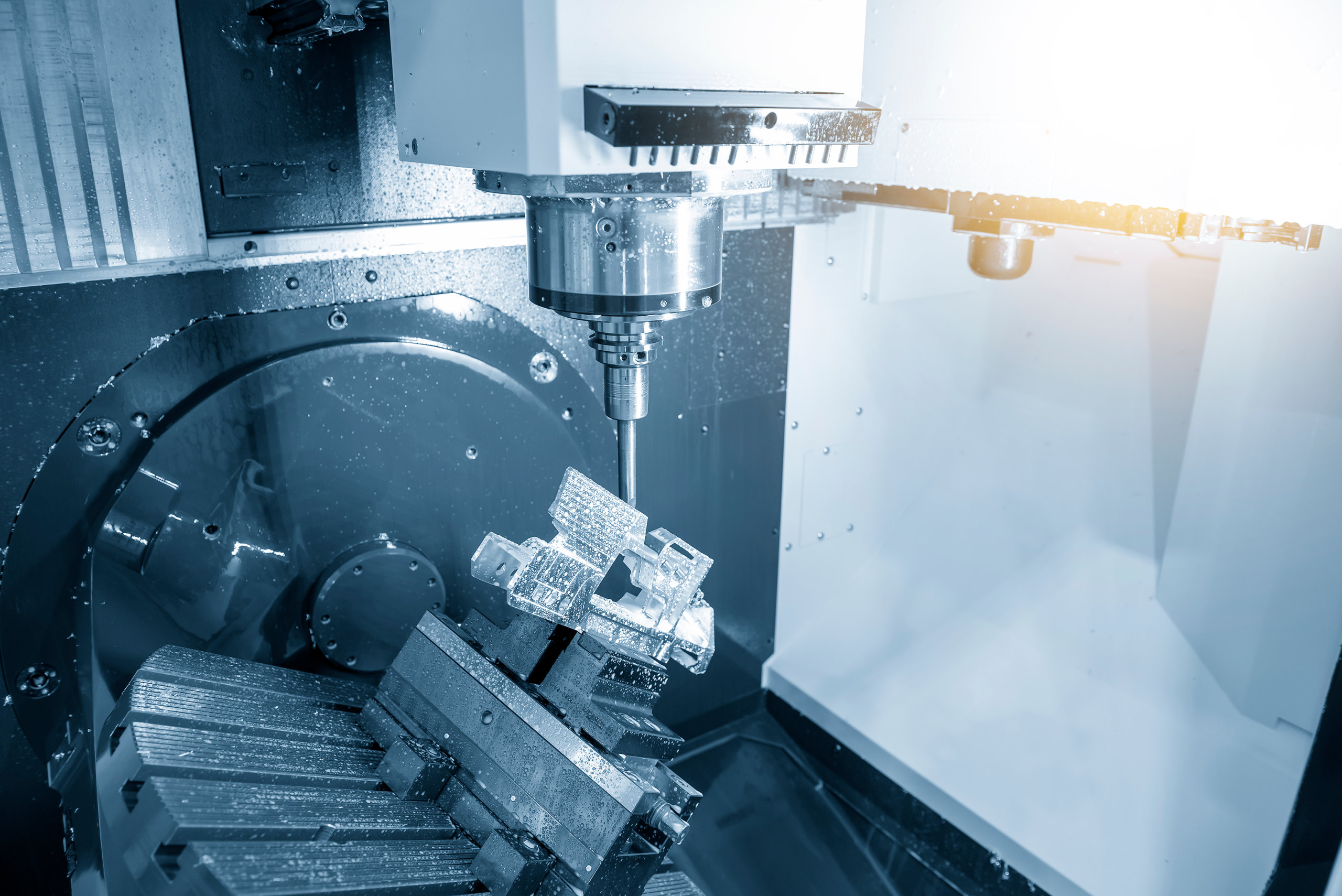
The 5-axis CNC milling machine marks the pinnacle of innovation in 21st-century machining. It’s a precise, fast-working, precision machining powerhouse.
In this setup, the X, Y, and Z-axes are similar to a 3-axis machine layout. The table then rotates along the A-axis, as it does with the 4-axis. However, the 5-axis machine involves the pivoting action at the joint of the table, followed by rotation along the C-axis, which defines the fifth movement, which operates along the following motion paths:
- X-axis translation
- Y-axis translation
- Z-axis translation
- A-axis rotation
- C-axis rotation
5-axis machining allows the operator to simultaneously hit five different sides (or more!) of a part depending on the design complexities. As a result, the tool is capable of creating highly precise products and parts. So, it should come as no surprise that it’s widely used in medical technology, research and development, architecture, aerospace, military, automotive, and even creative arts applications. It’s also used for drilling holes at compound angles.
Limitations:
While the 5-axis CNC machine is excellent in terms of speed and accuracy, it comes with the following issues:
- The CAD/CAM programming for 5-axis machines can be extremely complicated, especially while envisioning the spatial trajectory.
- Since 5-axis milling machines are not that common yet, purchasing and maintaining one is a large investment — and the tooling solutions are equally expensive.
- Operating a 5-axis machine requires an exceptionally skilled CNC machine operator.
7-Axis CNC Machining
7-axis CNC milling machines can create long, slender, and heavily detailed parts. The 7-axes involved are the usual right-left, top-down, and back-front, followed by the axes defined by the spinning of the tool, rotation of the part, rotation of the tool head, and movement for clamping, reclamping, or removing the part. This breaks down to the following motions:
- X-axis translation
- Y-axis translation
- Z-axis translation
- A-axis rotation
- B-axis rotation
- C-axis rotation
- E-axis rotation (twisting of the arm itself)
This high degree of movement imparts greater accuracy to the finished product without the need for post-fabrication processes. Due to the ability of a 7-axis CNC machine to mill while turning the part within the frame, you can produce extraordinarily complex shapes and features. A 7-axis CNC machine is especially useful in the aerospace and military industries.
9-Axis CNC Machining
The 9-axis CNC combines a 4-axis lathe and 5-axis milling machine. This traditionally involves a 5-axis CNC milling machine to complete surface machining, and a 4-axis lathe to complete internal machining. This gives 9-axis machines all the rotations and translational movements, coupled with the rotations around two additional axes known as the U and W axes.
As a result, parts can be turned and milled along various planes in a single setup with incredible accuracy. One of the greatest advantages of a 9-axis CNC is it eliminates secondary fixtures and manual loading. The 9-axis CNC is so highly capable, it can complete a fully-finished product in a single fixturing. Common applications for 9-axis machines include implantable medical devices, complex aerospace parts, surgical tools, and dental implants.
12-Axis CNC Machining
If 9-axis CNC machining is the whole package, then its 12-axis counterpart is an absolute beast! The 12-axis CNC machines typically contain two heads that allow movement along the X, Y, Z, A, B, and C-axes. This configuration doubles productivity and accuracy while cutting down manufacturing time by half!
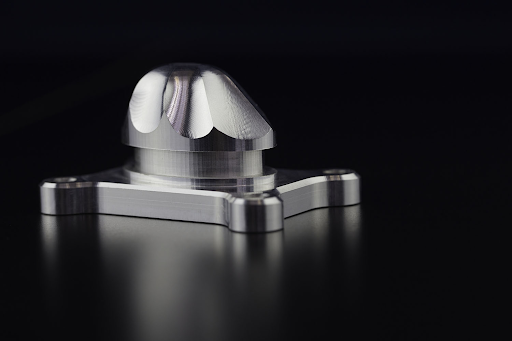
Final Thoughts on Types of CNC Machine Axes
CNC machining continues to stay relevant and effective to this day. It serves various manufacturing-intensive sectors and maintains product quality, precision, and standardization. As machines acquire more axes of movement, they are only bound to get better with each iteration. So while they may be a significant investment, they also promise long-lasting service in return!
Sourcing Simplified
If you’re tasked with sourcing and supplying mechanical parts, Fictiv is your operating system for custom manufacturing that makes it faster, easier, and more efficient. In other words, Fictiv lets engineers, like you, engineer. Fictiv’s custom CNC machining service offers a range of CNC machining capabilities that leverage many types of CNC machines to produce both simple and incredibly complex geometries — create a free account and upload your designs today!
